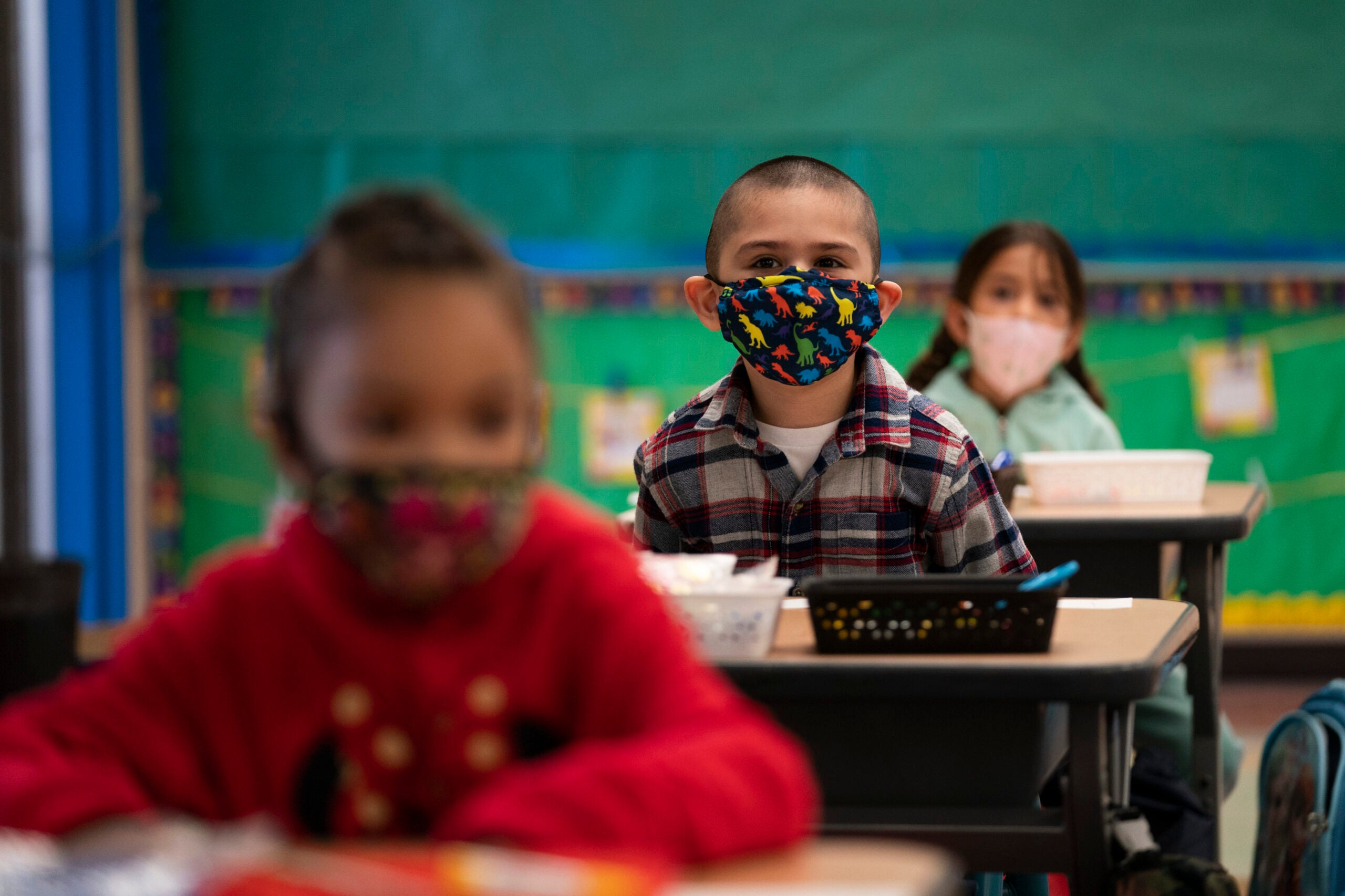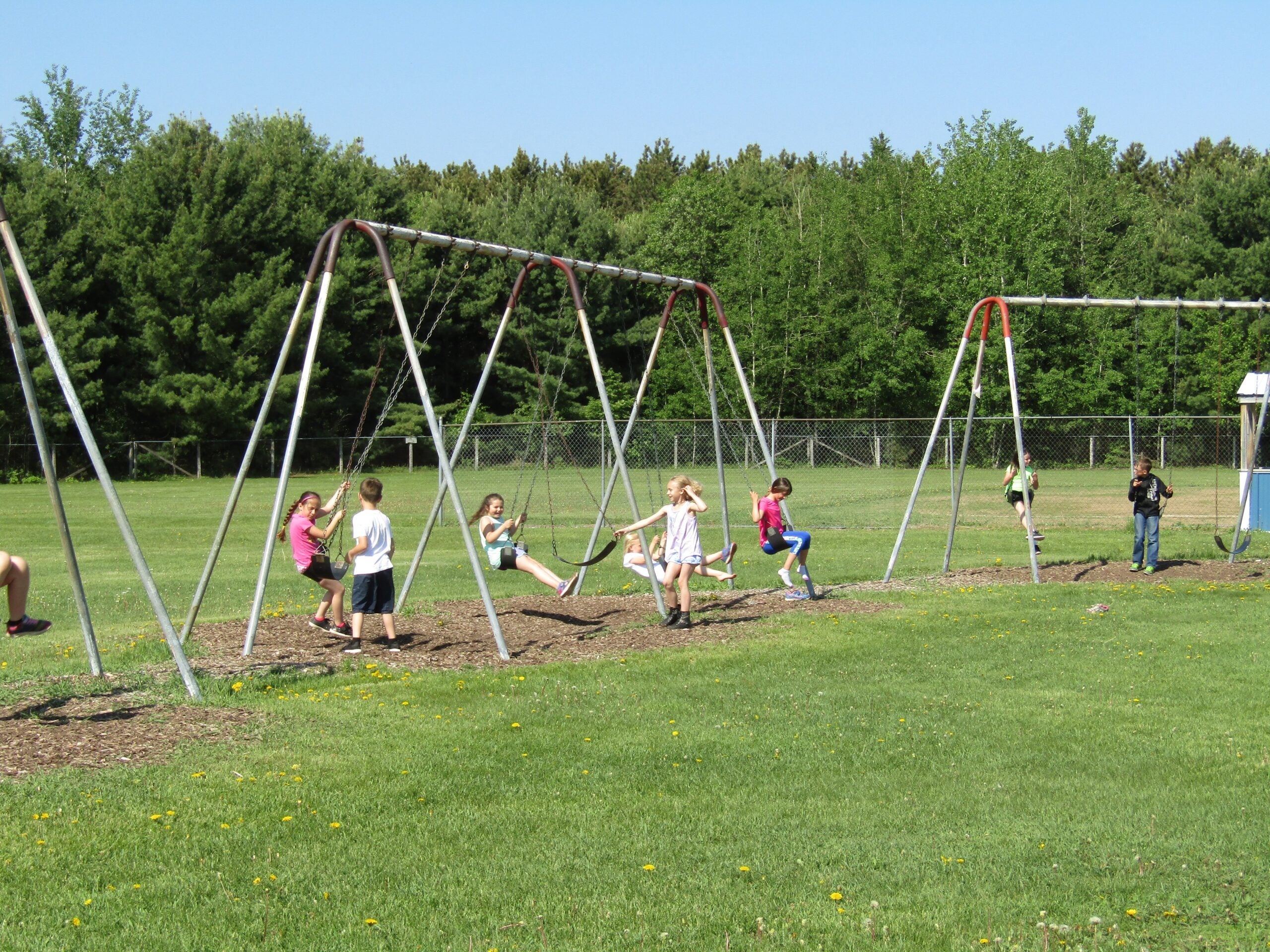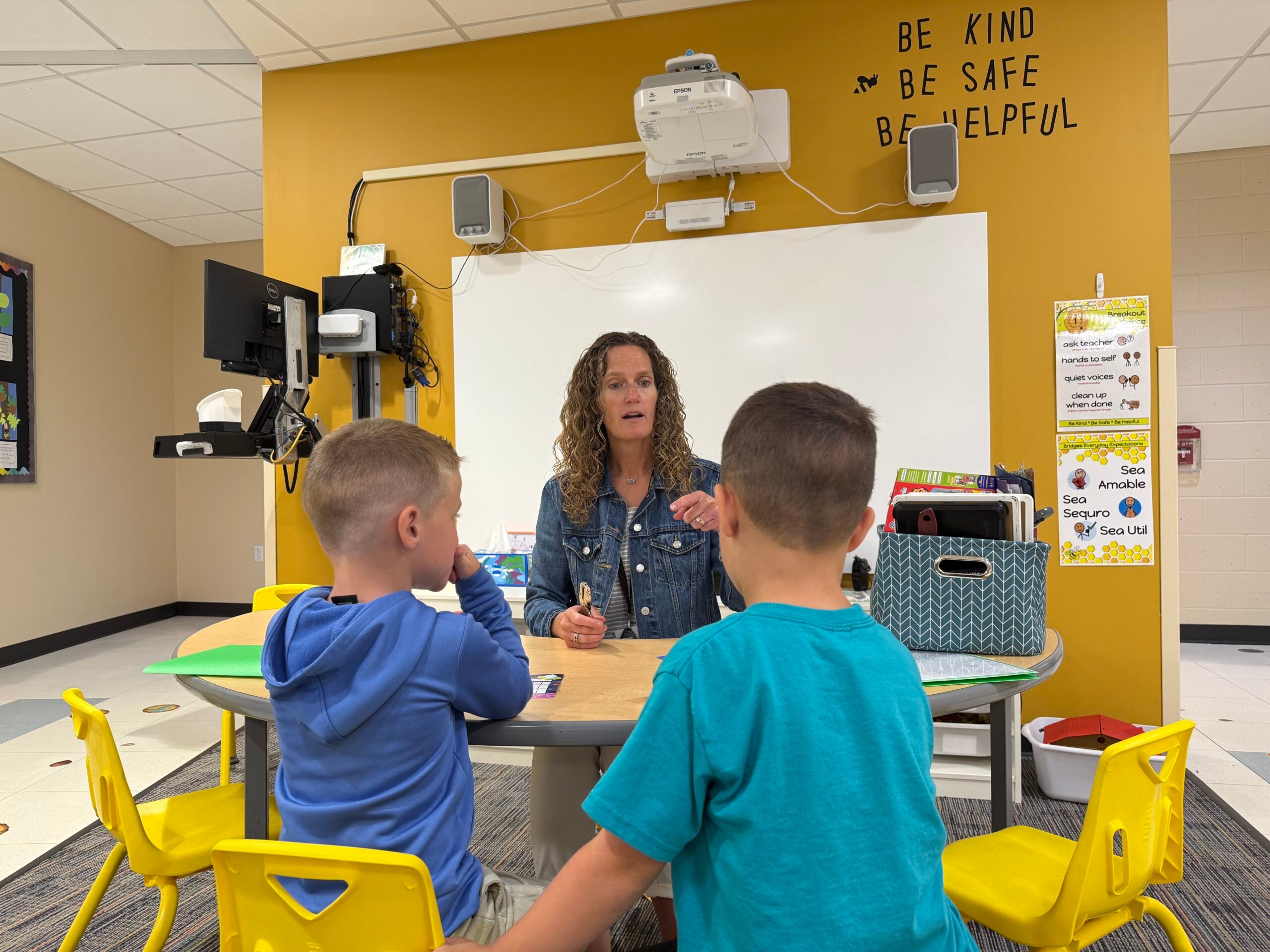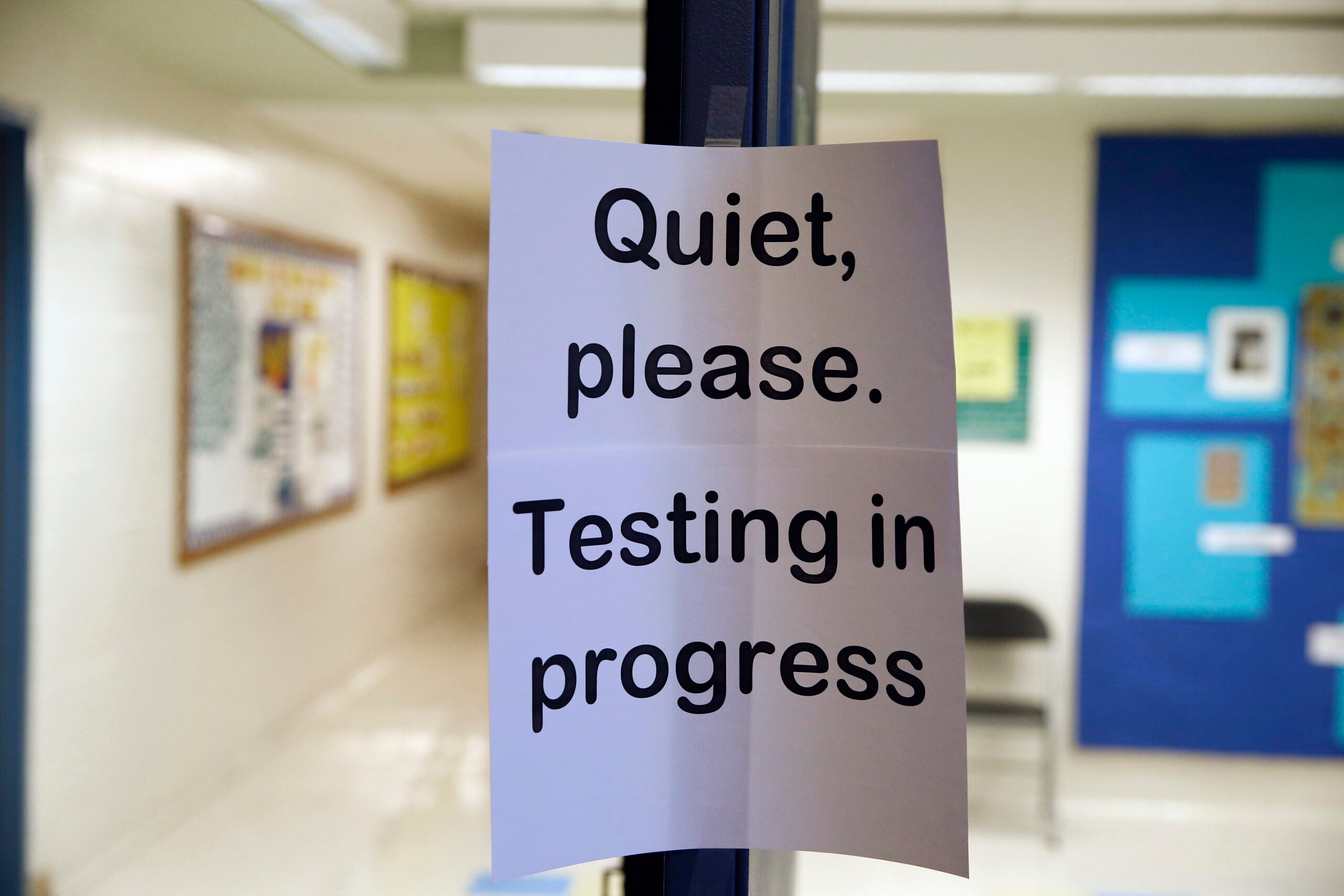About 60 percent of Wisconsin’s public schools and 13 percent of its private schools have opted into a free, school-based COVID-19 testing program for students through the state Department of Health Services.
Amid a COVID-19 surge driven by the delta variant, the communities around schools are seeing high rates of disease activity — which means cases are likely to turn up in schools.
In preparation for students getting sick, and armed with the lessons learned last year, schools have geared up to test symptomatic students and contact trace positive cases.
News with a little more humanity
WPR’s “Wisconsin Today” newsletter keeps you connected to the state you love without feeling overwhelmed. No paywall. No agenda. No corporate filter.
The Kickapoo School District is working with a provider to set up state-sponsored in-school testing, but district administrator Douglas Olsen said it’s not going to be fully up and running for a few weeks. For now, symptomatic students are getting tested via take-home kits, monitored by doctors over telehealth appointments.
“Some parents choose to test their kids, and some parents choose to not test their kids but keep them home,” he said.
Olsen said watching for COVID-19 cases in the nearly two weeks Kickapoo students have been in class is complicated by the surge in other respiratory illnesses with similar symptoms, like respiratory syncytial virus, or RSV. Those are more typically seen in the winter months, but after unusually low disease rates last school year because of masks, social distancing and virtual learning, they’ve come roaring back with an unusual summer spike.
“When you look at the symptoms, there’s some other viruses passing around school-aged children, and we’ve even had some adults in our building who have gotten the same virus and been tested (for COVID-19) and are negative,” he said.
The Kickapoo School District has had its part-time school nurse work with the county health department on contact tracing, using federal relief funds to increase her hours.
The Racine Unified School District, which started classes earlier this week, is identifying possible COVID-19 cases through students showing up at district “health rooms” with symptoms, absences and self-reporting from parents or guardians. From there, district health staffers said via email, that Racine Unified’s Health Services works with the local health department to identify positive cases and close contacts through contact tracing and seating charts for classrooms, buses and the cafeteria.
Racine also signed up for the state’s testing program but said its partner vendor won’t have that fully up and running until the end of September.
Contact tracing also looks different this year. In accordance with guidelines from the Centers for Disease Control and Prevention, asymptomatic students who are in close contact with someone who tests positive don’t have to quarantine if both people wore masks properly and stayed at least 3 feet apart. Fully vaccinated people without symptoms also don’t have to quarantine, though they do have to mask and are recommended to get tests.
There’s also an option to reduce quarantines to seven or 10 days, from 14, if appropriate precautions are in place. Kickapoo schools are bringing quarantines down to seven days, but in Racine, health staff said they’re sticking with the full 14 because classrooms and buildings aren’t set up to allow for consistent social distancing of 3 feet or more.
At the Lac Courte Oreilles Ojibwe School, students and staff can be tested using rapid antigen tests onsite through the Lac Courte Oreilles Indian Health Center.
“If we have students with allergy symptoms, we can test them onsite in school and keep them in school,” said superintendent Jessica Hutchinson. “Last year, if we had a kid that was having any symptoms, they had to go home, they had to get tested, they had to wait for any results and they’d miss a ton of school.”
If they’re symptomatic, students wait in a “green room” near the school entrance for test results, and then are sent home with a comprehensive information packet about next steps.
“Then we start contact tracing, going through our list of potential contacts,” she said. “We then take that list of close contacts and cross-reference it with vaccinated students, and make sure that if there were close contacts that were vaccinated, screen them for symptoms and make sure they’re OK to stay in school.”
The school implemented universal masking with what Hutchinson said was far less controversy than in other schools and districts around the state — which she credits to the communal sense of care and responsibility at the core of the school’s tribal community.
“We take care of each other, and we have a responsibility to keep each other safe,” she said.
Hutchinson said she typically hears about positive cases or symptoms diagnosed outside school from families even before the health department gets in touch.
“There’s genuine and sincere concern that they don’t want to have anyone else get it, or spread it beyond their home,” she said.
At the Kickapoo School District, Olsen said their universal mask requirement and COVID-19 precautions were more controversial. He said some families opted for homeschooling or used open enrollment to leave the district over masking, but he estimates that at least a portion of the 500-student district’s roughly 100 out-of-district students who open enrolled into Kickapoo did so because they were seeking mask requirements.
“People want to talk about freedoms and rights and ‘you’re limiting my rights,’ but the reality is that we will have less quarantines of students if all students are masked,” he said. “We had — and other districts had — quite a few quarantines last year and a lot of lost days of students.”
Although testing programs are focused on students, positive or suspected cases among staff were a key factor in whether schools could stay open in person last school year. The tipping point for schools to shut down usually came when there were more teachers out quarantining than substitutes to cover them.
Olsen said that’s one of his biggest concerns this school year. With more than 90 percent of the district’s staff vaccinated, he said he’s hoping they’ll be able to avoid shutdowns.
“We just don’t have the subs, in any area, from custodial to food service to teaching, to maintain face-to-face instruction with a very large percentage of people out of the building,” he said.
Wisconsin Public Radio, © Copyright 2026, Board of Regents of the University of Wisconsin System and Wisconsin Educational Communications Board.







